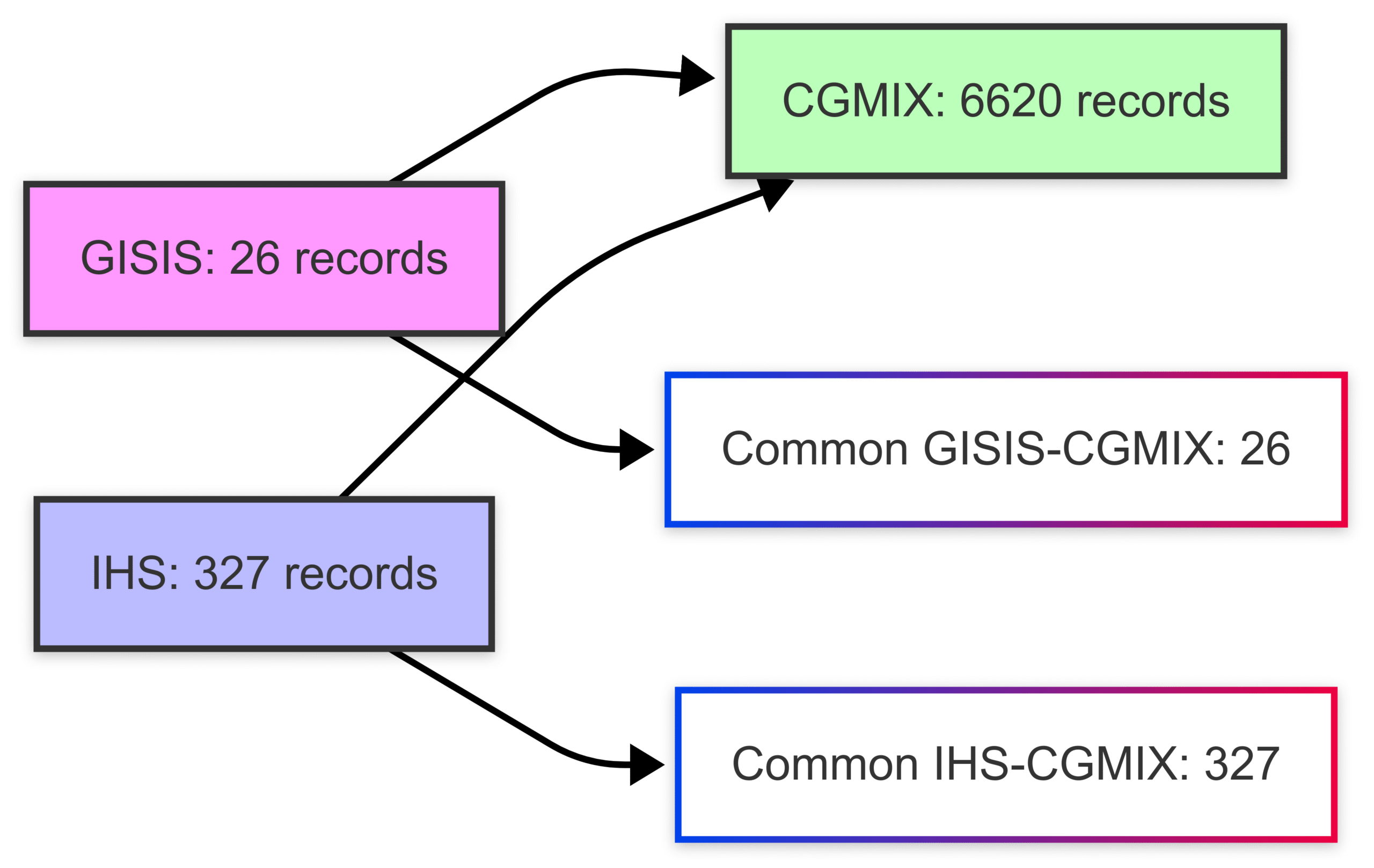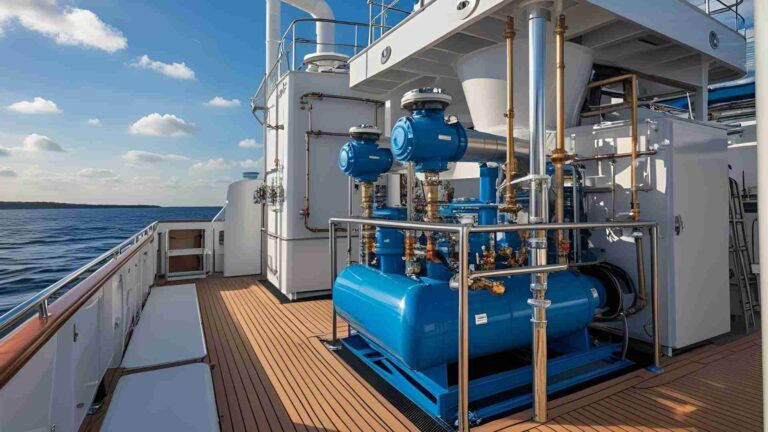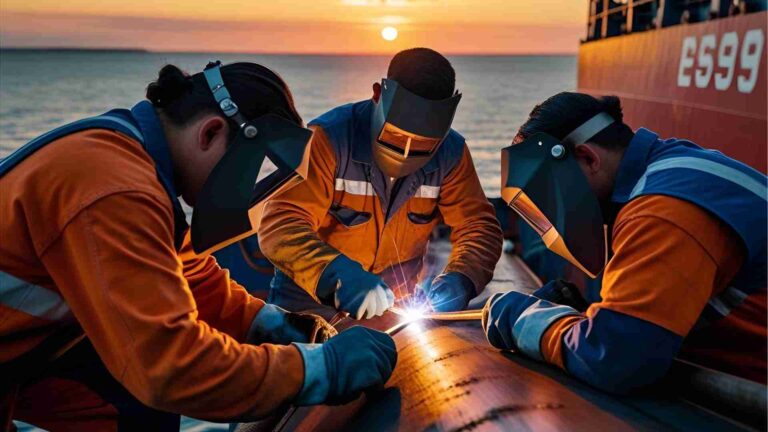Evaluating differences between maritime accident databases
Explore the differences between maritime accident databases like GISIS, IHS Markit, and CGMIX, comparing focus, accessibility, and data scope for maritime safety and research.
Maritime accident databases are critical tools for ensuring safety, informing policy, and supporting research in the global shipping industry. These databases, maintained by various organizations, provide data on vessel incidents, regulatory compliance, and environmental impacts, enabling stakeholders to assess risks and enhance maritime operations. Among the most prominent databases are the Global Integrated Shipping Information System (GISIS), managed by the International Maritime Organization (IMO), IHS Markit (formerly IHS Fairplay), and the United States Coast Guard’s CGMIX. Each database serves distinct purposes, with differences in focus, accessibility, data scope, and reporting biases that impact their utility for maritime safety assessments and research. This article provides a comprehensive comparison of these databases, analyzing their strengths, limitations, and implications for maritime risk management.
Introduction to Maritime Accident Databases
Maritime accidents, ranging from collisions and groundings to fires and machinery failures, pose significant risks to human life, the environment, and global trade. Accurate and comprehensive accident data is essential for the IMO’s Formal Safety Assessment (FSA), a risk assessment methodology used to guide maritime policy decisions. Databases like GISIS, IHS Markit, and CGMIX collect and organize this data, but their approaches differ in scope, accessibility, and detail. Understanding these differences is crucial for selecting the appropriate database for specific needs, such as regulatory compliance, risk analysis, or academic research.
Under-reporting of maritime accidents is a known challenge that can skew risk assessments and policy outcomes. Factors such as accident type, severity, and ship type influence reporting rates, creating biases that affect data reliability. This article draws on a detailed study from the 33rd European Safety and Reliability Conference (ESREL 2023), which compared GISIS, IHS Markit, and CGMIX, alongside insights from the European Maritime Safety Agency (EMSA) and IMO resources, to provide a thorough evaluation of these databases.
Overview of Key Maritime Accident Databases
1. Global Integrated Shipping Information System (GISIS)
GISIS, developed by the IMO, is a centralized online platform designed to enhance transparency, regulatory compliance, and maritime safety. Launched with modules like the Port Reception Facility Database (PRFD) in 2006, GISIS provides a structured repository for maritime data, supporting IMO’s mission to promote safe, secure, and environmentally sustainable shipping.
Key Features
- Focus: GISIS emphasizes maritime safety, security, and environmental protection, aligning with IMO conventions such as SOLAS, MARPOL, and the Ballast Water Management (BWM) Convention.
- Modules:
- Marine Casualties and Incidents (MCI): Contains structured reports on maritime accidents, including incident descriptions, ship information, and locations.
- Port Reception Facilities: Lists facilities for handling ship-generated waste, supporting MARPOL compliance.
- Ship and Company Particulars: Offers searchable data on vessels and companies using IMO numbers.
- Maritime Security: Tracks piracy, armed robbery, and compliance with the ISPS Code.
- Pollution Prevention and Ballast Water Management: Provides data on compliant equipment and systems.
- Ship Fuel Oil Consumption: Supports IMO’s decarbonization goals under MARPOL Annex VI.
- Accessibility: GISIS offers public access to select data without registration, while additional modules require an IMO web account. Member States update data via secure logins.
- Data Scope: Focuses on incidents reported to the IMO, with detailed records for serious accidents but limited coverage of non-serious incidents. Notably, GISIS excludes cruise and passenger ships from its casualty module.
- Transparency: Public access to view-only data promotes accountability, though updates are restricted to Member States.
Limitations
- Incomplete coverage of non-serious accidents.
- Exclusion of cruise and passenger ships.
- Approximately 20% of accident records lack precise coordinates, requiring manual estimation.
- Inconsistent accident categorization, necessitating manual review for accuracy.
2. IHS Markit (Sea-Web)
IHS Markit, now part of S&P Global, maintains a comprehensive commercial database accessible through its Sea-Web platform. Widely used for formal safety assessments, it provides detailed ship and accident data for maritime stakeholders.
Key Features
- Focus: Offers extensive data on the global merchant fleet, including ship particulars, ownership, and casualty records.
- Data Scope: Covers a broad range of accident types, including hull and machinery damage, with detailed narratives on incidents, environmental conditions, and locations.
- Accessibility: Available via paid subscription, limiting access to commercial users or institutions.
- Data Completeness: More comprehensive for non-serious accidents compared to GISIS, though still subject to under-reporting.
Limitations
- High cost of access restricts availability to well-funded organizations.
- Reporting biases favor serious accidents, similar to GISIS.
- Requires manual location extraction for some records.
3. CGMIX (US Coast Guard)
CGMIX, maintained by the United States Coast Guard (USCG), is a database of marine casualties and incidents within US territorial waters. It benefits from mandatory reporting requirements, resulting in a high volume of records.
Key Features
- Focus: Tracks incidents in US waters, including groundings, collisions, and environmental hazards, as mandated by US law.
- Data Scope: Includes detailed incident descriptions, vessel information, and damage assessments. Covers both serious and non-serious incidents.
- Accessibility: Publicly accessible, with comprehensive records due to strict reporting incentives, including fines for non-compliance.
- Data Completeness: Contains significantly more records than GISIS or IHS Markit, particularly for non-serious incidents like hull and machinery damage.
Limitations
- Limited to US waters, reducing global applicability.
- Lacks standardized accident taxonomy, requiring manual categorization.
- US-flagged vessels use hull identification numbers (HIN) instead of IMO numbers, complicating data linkage.
Comparative Analysis of Maritime Accident Databases
To understand the differences between GISIS, IHS Markit, and CGMIX, a study conducted by Spencer A. Dugan and Ingrid B. Utne at NTNU analyzed accident data from 2014 to 2021 for commercial ships over 100 gross tonnage within the US economic exclusion zone (EEZ). The study used CGMIX as a baseline due to its extensive records and calculated reporting rates to assess completeness and biases.
Methodology
- Data Extraction: Accidents were filtered to include only those with IMO numbers and occurring within the US EEZ.
- Data Processing:
- GISIS: Validated IMO numbers, estimated missing coordinates, and relabeled inconsistent accident categories.
- IHS Markit: Used Marsden zones to filter US EEZ accidents and manually extracted coordinates for vague locations.
- CGMIX: Manually labeled accidents using IHS taxonomy and linked US-flagged vessels’ HIN to IMO numbers.
- Reporting Rates: Calculated as the number of common accidents between databases divided by total CGMIX records (Equation:
xA,B = |A∩B| / |B|).
Accident Taxonomy
The study developed a unified taxonomy to align accident categories across databases, as shown below:
| GISIS Category | IHS/CGMIX Category |
|---|---|
| Collisions | Collisions |
| Stranding or grounding | Stranded |
| Contact | Contact |
| Fire or explosion | Fire/Explosion |
| Hull failure, watertight doors, etc. | Hull/Machinery Damage |
| Machinery damage | Hull/Machinery Damage |
| Damage to ship or equipment | Hull/Machinery Damage |
| Capsizing or listing | Foundered |
| Missing | N/A |
| Accidents with life-saving appliances | N/A |
| Other | Various |
Key Findings
The study revealed significant differences in reporting rates, influenced by accident type, severity, and ship type. Below are the key results:
1. Database Overlap
A Venn diagram illustrates the overlap of accident records:

- CGMIX recorded 6,620 accidents, far exceeding GISIS (26) and IHS (327).
- Only a small fraction of CGMIX records were shared with GISIS (0.4%) and IHS (4.9%).
2. Reporting Rates by Accident Type
The table below summarizes reporting rates for GISIS and IHS relative to CGMIX:
| Accident Type | GISIS (n, Rate) | IHS (n, Rate) | CGMIX (N) |
|---|---|---|---|
| Collisions | 3, 1.1% | 20, 7.3% | 275 |
| Stranded | 7, 0.9% | 96, 12.7% | 756 |
| Contact | 2, 0.3% | 74, 9.4% | 791 |
| Fire/Explosion | 5, 2.7% | 34, 18.5% | 184 |
| Hull/Machinery Damage | 2, 0.0% | 87, 1.9% | 4,579 |
| Foundered | 7, 20.0% | 16, 45.7% | 35 |
| Overall | 26, 0.4% | 327, 4.9% | 6,620 |
- Foundering had the highest reporting rates (GISIS: 20.0%, IHS: 45.7%), likely due to its severity.
- Hull/Machinery Damage had the lowest reporting rates (GISIS: 0.0%, IHS: 1.9%), despite being the most frequent accident type in CGMIX.
3. Reporting Rates by Severity (IHS)
IHS data was further analyzed by accident severity:
| Accident Type | Non-Serious (n, Rate) | Serious (n, Rate) | CGMIX (Non-Serious, Serious) |
|---|---|---|---|
| Collisions | 6, 3.0% | 17, 23.6% | 203, 72 |
| Stranded | 81, 11.2% | 22, 62.9% | 721, 35 |
| Contact | 0, 0.0% | 45, 28.3% | 632, 159 |
| Fire/Explosion | 15, 10.3% | 24, 61.5% | 145, 39 |
| Hull/Machinery Damage | 78, 1.7% | 11, 16.4% | 4,512, 67 |
| Foundered | 0, 0.0% | 22, 95.7% | 12, 23 |
| Overall | 180, 2.9% | 141, 35.7% | 6,225, 395 |
- Serious accidents were significantly more likely to be reported than non-serious ones across all types.
- Foundering had a 95.7% reporting rate for serious incidents in IHS, while non-serious incidents were rarely reported.
4. Reporting Rates by Ship Type
Reporting rates varied by ship type:
| Ship Type | GISIS (n, Rate) | IHS (n, Rate) | CGMIX (N) |
|---|---|---|---|
| Cargo Ships | 5, 0.3% | 127, 6.5% | 1,963 |
| Cruise Ships | 0, 0.0% | 17, 12.5% | 136 |
| Fishing Vessels | 12, 1.3% | 66, 7.4% | 894 |
| Offshore | 1, 0.4% | 11, 4.7% | 236 |
| Other Activities | 5, 0.2% | 40, 2.0% | 2,045 |
| Passenger Ships | 0, 0.0% | 26, 4.4% | 587 |
| Tankers | 3, 0.4% | 35, 5.2% | 679 |
| Overall | 26, 0.4% | 322, 4.9% | 6,540 |
- Cruise ships and fishing vessels had the highest reporting rates in IHS (12.5% and 7.4%, respectively).
- GISIS reported no accidents for cruise or passenger ships, highlighting a significant gap.
Implications for Maritime Risk Assessments
Under-reporting in GISIS and IHS databases can lead to:
- Underestimated Accident Frequencies: Low reporting rates for non-serious accidents skew risk calculations in the IMO’s FSA, potentially invalidating event tree analyses.
- Biased Risk Influencing Factors (RIFs): Over-representation of serious accidents may skew RIFs toward predicting severe incidents, underestimating minor ones.
- Policy Challenges: Inaccurate data complicates the evaluation of risk control options, affecting maritime safety regulations.
Complementary Databases: EMSA’s Central Reference Databases
The European Maritime Safety Agency (EMSA) maintains several central reference databases that complement maritime accident databases:
- Central Ship Database (CSD): Contains data on over 300,000 ships, supporting vessel identification and regulatory tasks.
- Central Geographical Database (CGD): Stores reference areas for EMSA applications, including CleanSeaNet and fisheries control zones.
- Central Organisational Database (COD): Manages information on public and private organizations within the SafeSeaNet ecosystem.
- Central Location Database (CLD): Provides location data, including UN/LOCODEs and port facilities from GISIS.
- Central Hazmat Database (CHD): Lists dangerous goods for SafeSeaNet reporting, supporting environmental compliance.
These databases enhance the functionality of accident databases by providing contextual data on ships, locations, and organizations, improving the accuracy of maritime safety analyses.
Practical Applications and Use Cases
Maritime accident databases serve various stakeholders:
- Regulators: Use GISIS and CGMIX to monitor compliance and develop policies.
- Researchers: Leverage IHS Markit and GISIS for statistical analysis and risk studies.
- Ship Operators: Access port reception facility data in GISIS for MARPOL compliance.
- Analysts: Combine CGMIX’s detailed US data with IHS’s global scope for comprehensive risk assessments.
Challenges and Recommendations
Challenges
- Under-Reporting: GISIS and IHS significantly under-report non-serious accidents, particularly hull/machinery damage.
- Data Inconsistencies: Variations in accident taxonomies and missing coordinates complicate comparisons.
- Accessibility: IHS Markit’s subscription cost limits access, while GISIS’s public access is restricted for some modules.
- Geographical Scope: CGMIX’s focus on US waters limits its global applicability.
Recommendations
- Incorporate Multiple Sources: Combine GISIS, IHS, and CGMIX to mitigate under-reporting biases.
- Standardize Taxonomies: Develop a universal accident classification system to improve data consistency.
- Enhance Reporting Incentives: Adopt USCG-like mandatory reporting globally to increase data completeness.
- Conduct Multivariate Analysis: Explore factors influencing reporting rates to address biases.
- Expand GISIS Coverage: Include cruise and passenger ships to improve comprehensiveness.
Conclusion
Maritime accident databases like GISIS, IHS Markit, and CGMIX are indispensable for ensuring safety and compliance in the shipping industry. GISIS offers transparency and regulatory focus but lacks coverage of non-serious accidents and certain ship types. IHS Markit provides detailed commercial data but is costly and biased toward serious incidents. CGMIX excels in US-specific data due to mandatory reporting but is geographically limited. By understanding these differences, stakeholders can select the most suitable database for their needs, combining multiple sources to address under-reporting and enhance maritime safety. Engaging with these databases not only supports compliance but also contributes to safer and more sustainable maritime operations worldwide.
FAQs
What is the purpose of GISIS?
Who can access these databases?
How do databases support environmental protection?
Are these databases useful for researchers?
Happy Boating!
Share Evaluating differences between maritime accident databases with your friends and leave a comment below with your thoughts.
Read Port State Control Inspections Explained: What to Expect until we meet in the next article.






